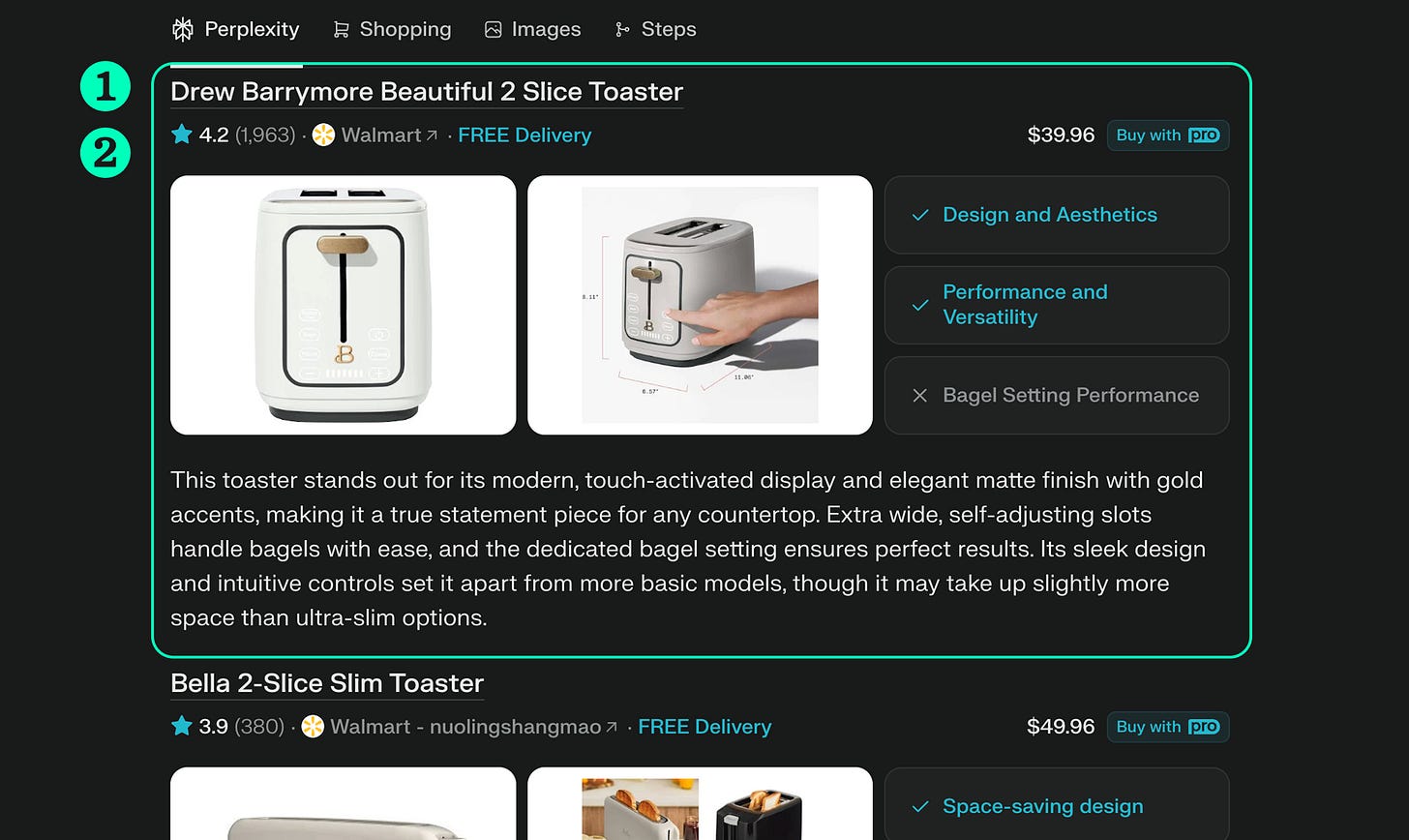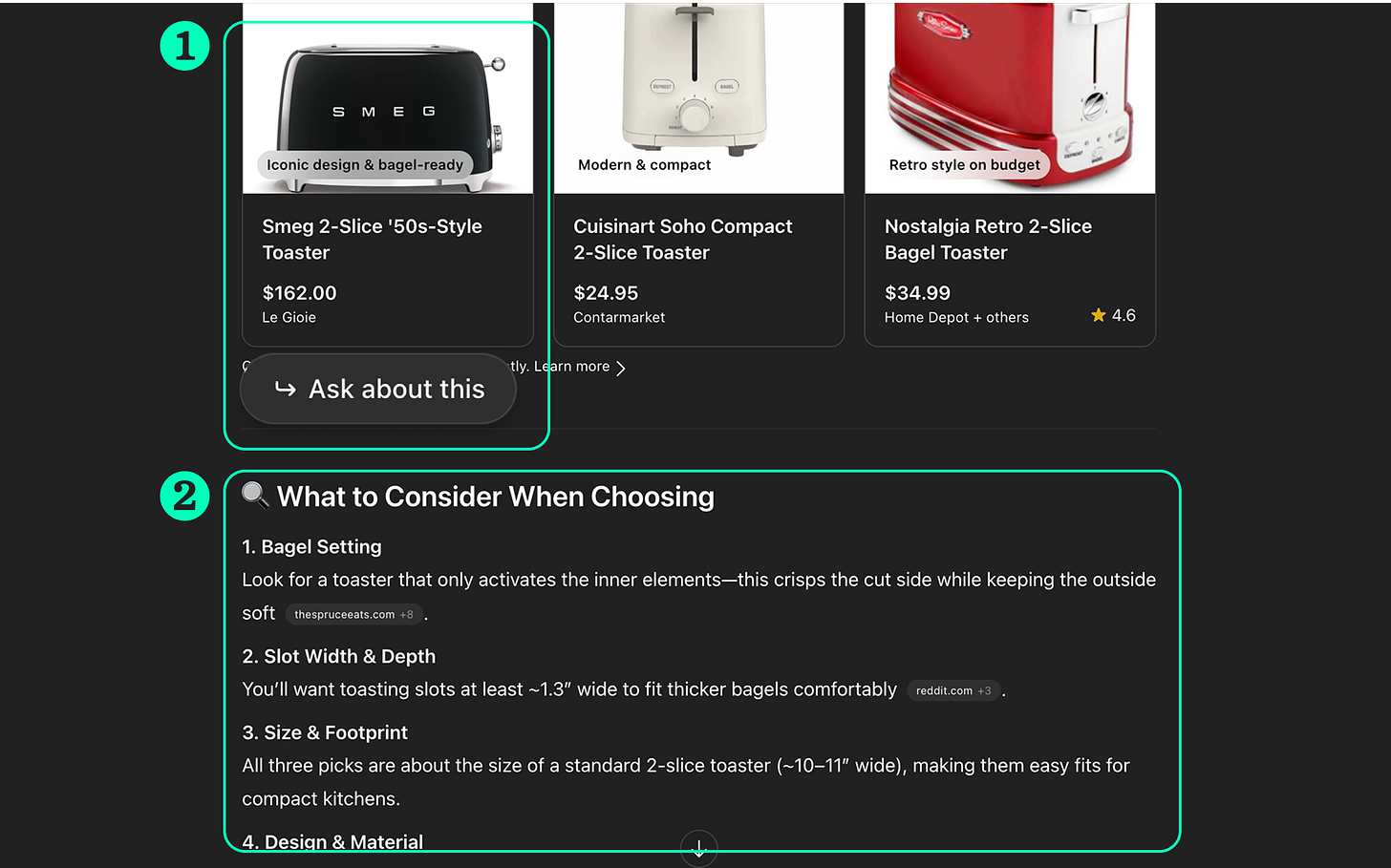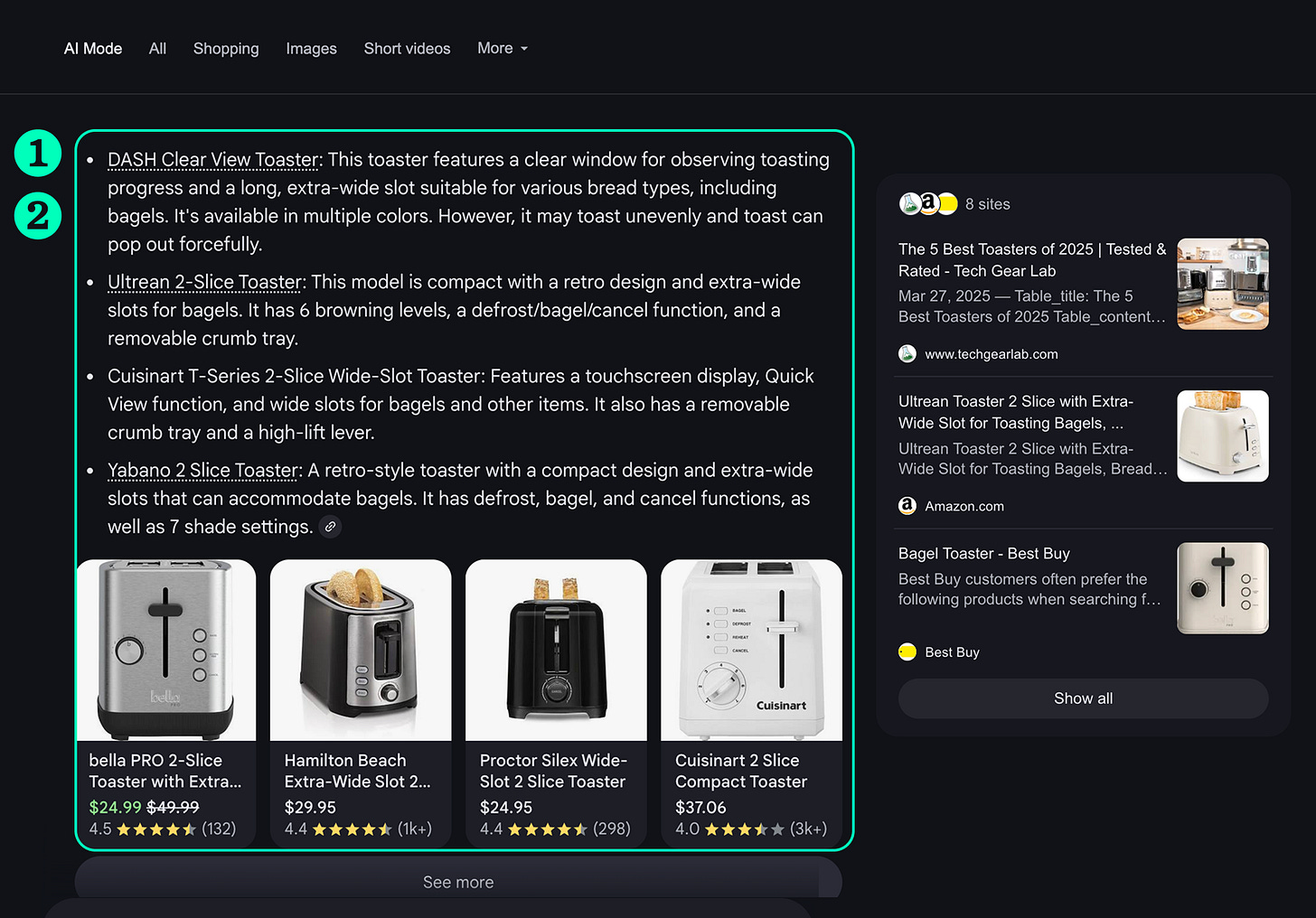Are AI Models Ready for Shopping UX?
The UX Gaps Major AI Models Haven’t Solved Yet
The reality check
Nearly half of U.S. consumers now use AI tools during online shopping, with 69% interacting with AI-generated prompts when searching for products.1
But here's the disconnect: AI models are racing to redefine e-commerce while still struggling with basic shopping fundamentals.
We’re in a hybrid era where the question is:
How well do AI models support online shopping experience?
Four key UX factors for AI-powered shopping
✅ Conversation-Browsing Integration
Can users fluidly switch between chatting and browsing, with shopping-specific UI when needed?✅ Fit Explanations & Context
Does AI explain "why this product fits for me" based on user’s specific preferences and context?✅ Deal Confidence
Can users trust the AI’s recommendation, and independently verify price, reviews, and alternatives?✅ Trusted Purchase Pathways
Do users feel assured and informed when checking out?
Let’s zoom in on 3 leading AI models worth studying
Perplexity
❶ Conversation-Browsing: 🟢 Strong
Clean product visuals are tightly integrated with chat; allowing users to browse and chat together.
❷ Fit Explanations: 🔴 Weak
Acknowledges user requirements in summaries but lacks comprehensive "why this fits you" explanation
❸ Deal Confidence: 🔴 Weak
Shows one website only, prohibiting price comparisons; oversimplifies reviews into one section
❹ Purchase Pathways: 🟡 Moderate
‘Buy with Pro’ allows one-click check-out, but missing policy-related information on return and delivery
👉 Bottom Line
Prioritizes seamlessness over confidence. Great UI, but lacks decision-making depth.
ChatGPT
❶ Conversation-Browsing: 🟡 Moderate
Easy to switch from browsing to chatting, but visuals are separated from text responses
❷ Fit Explanations: 🟢 Strong
Delivers strong, tailored insights on why a product fits, and guides what to consider when choosing
❸ Deal Confidence: 🟡 Moderate
Includes pricing information from multiple sites; reviews are summarized by source, making validation limited
❹ Purchase Pathways: 🔴 Weak
Offers basic shipping & return policies, but no built-in checkout; users have to complete purchase from external sites
👉 Bottom Line:
Strong on context and decision guidance. Weak on visual UX and checkout integration.
Google AI Mode
❶ Conversation-Browsing: 🔴 Weak
In-context switch between browse and chat is not supported
❷ Fit Explanations: 🔴 Weak
Pulls user inputs into product details without connecting them to meaningful recommendations
❸ Deal Confidence: 🟢 Strong
Surfaces trusted reviews, prices, and specs with clear links, using existing Google’s shopping modules
❹ Purchase Pathways: 🔴 Weak
Displays transparent shipping information yet breaks user flow by requiring external checkout
👉 Bottom Line:
Relies heavily on existing shopping modules rather than providing a truly AI-augmented shopping experience.
How the models stack up
No single platform has cracked AI shopping yet.
Perplexity: Seamless experience, trust gaps
ChatGPT: Context-rich, visually disconnected
Google AI Mode: Data-heavy, fragmented interface
Key UX insights
🤝 Confidence beats convenience: Seamless UX isn’t enough if users don’t trust the outcome. If the system feels like it’s pushing a decision instead of supporting one, users hesitate or drop off.
🔍 Verification matters: Even with strong recommendations, users need proof. When users can verify, they engage more deeply, and trust the AI more over time.
👕 Don't neglect visual design: Shopping is inherently visual, even with AI assistance.
🧠 Augmented decision-making is the future: Users want to offload mental effort but still make the final call. AI should support this with transparency and adaptive learning over time.
Consider these questions for your AI products
Does your AI feel like it's supporting decisions or pushing them to users?
Can users easily verify your AI recommendations independently?
Are you prioritizing confidence over speed, or vice-versa?
Does your interface support fluid transitions between conversation and visual experience?
The winners will be those who solve for user confidence first, seamless experience second.
💡
Are you helping users feel more confident, or just faster?
Source: adMarketplace survey, 2025












